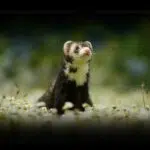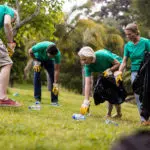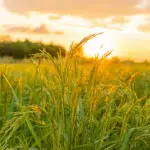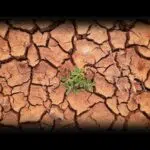Children and Nature Awareness Month is celebrated all through April and is aimed at creating a connection between children and nature. A large portion of the younger generation has no understanding of how to safeguard the environment because they spend so much time indoors and in front of a screen. Inspiring natural exploration in youngsters fosters a lifelong appreciation for and stewardship of their surroundings. As a result, educating children about the need to protect the environment is beneficial for future generations.
History of Children and Nature Awareness Month
As early as the late nineteenth century, environmental concerns were being raised, but they gained prominence in the early twentieth century due to the expansion of manufacturing and coal consumption. The fast-rising levels of air pollution in industrial regions were mostly caused by the enormous number of chemical discharges from numerous industries. However, even though the first environmental rules were created in Britain in 1863, they were unable to make much of an impact because of the rapid growth of businesses and factories.
Because humans have a direct impact on many of the planet’s resources, they are particularly vulnerable. With the rise of international accords to protect and manage natural resources, several countries have taken steps toward preventing or mitigating the effects of human activities on these resources. Toward this end, in 1972, the United Nations held a meeting in Stockholm, Sweden, to develop the concept of the right to a healthy environment. Later that year, the United Nations Environmental Program was established.
Sadly as all these actions were being taken to save our environment, the younger generation was still in the picture in terms of grasping the need for a better environment. In 2005, Richard Louv published the book “Last Child in the Woods: Saving our Children from Nature-Deficit Disorder.” Louv advanced the thought that children’s activities had become more and more indoor based and they were now disconnected from nature. He launched a campaign to bring back an understanding of the importance of nature among children and it is out of this call to action that the Children & Nature Network was born.
Children and Nature Awareness Month timeline
New international agencies are created as part of a global effort to address environmental issues.
The United Nations holds a global conference in Stockholm to discuss methods of protecting the environment.
An international agreement is created to curb the rise of greenhouse gas emissions and reduce the effects of global warming.
Author Richard Louv’s book “Last Child in the Woods: Saving our Children from Nature-Deficit Disorder” highlights the disconnect children have with the natural world.
An international treaty is signed by over 100 countries to mitigate the causes and effects of extreme climate changes.
Children and Nature Awareness Month FAQs
What is the significance of nature in early childhood
Children who play and spend time outside in nature show improved attention spans, memory, and other cognitive abilities.
What is the effect of nature on a child's growth?
The positive impact of nature exposure on children includes — better motor coordination, reduced stress levels, and increased social contact with adults and other children.
How do you raise children's consciousness about nature?
Let your words and deeds demonstrate your own mindfulness of nature.
Children and Nature Awareness Month Activities
Go outside
This month is a terrific time to be outside connecting with nature. It could be a picnic in the park, a stroll in the woods, or lazing at the beach, the choice is yours.
Take your children for a walk
A family hike is always enjoyable. Learn about plants and animals by hiking or going for a walk in the woods with your kids.
Attend local festivals celebrating children and nature
Participating in environmental initiatives is an excellent way to educate children about the importance of environmental preservation. This month, a variety of groups hold various events so be sure you attend.
5 Intriguing Facts About Nature
Cows kill more people than sharks
The annual death toll from shark attacks is five, whereas the annual death toll from cow attacks is 22.
Pluto hasn’t completed one orbit
Pluto was discovered on February 18, 1930, and hasn't completed a full circuit of the sun since because of its extremely slow orbit.
Four species of humans once existed
Researchers from Germany have discovered evidence of four separate human species coexisting in Kenya, Ethiopia, and Chad three million years ago.
The trees on Earth outnumber the stars
The number of stars in our galaxy is estimated to be between 200 and 400 billion, while there are an estimated 1 trillion trees on the planet.
Pineapples take two years to grow
If you plant a pineapple from a sucker, it will take around 18 months to produce a bloom, but if you plant the top of the pineapple, it will take two and a half years.
Why We Love Children and Nature Awareness Month
Children get to explore their natural curiosity
Children are constantly exploring their surroundings and soaking up information. They can really learn a lot about the world around them by spending time outside.
Children always have a fresh perspective
Children see the world in a way that is often new and exciting. Seeing the world through a child’s eyes can help adults appreciate the natural world once more.
The sheer beauty of nature captivates children
Children are filled with enthusiasm and energy, and they approach life with curiosity and excitement. It is inspiring to see children excited about the world around them.
Children and Nature Awareness Month dates
| Year | Date | Day |
|---|---|---|
| 2026 | April 1 | Wednesday |
| 2027 | April 1 | Thursday |
| 2028 | April 1 | Saturday |
| 2029 | April 1 | Sunday |
| 2030 | April 1 | Monday |



















































































































































